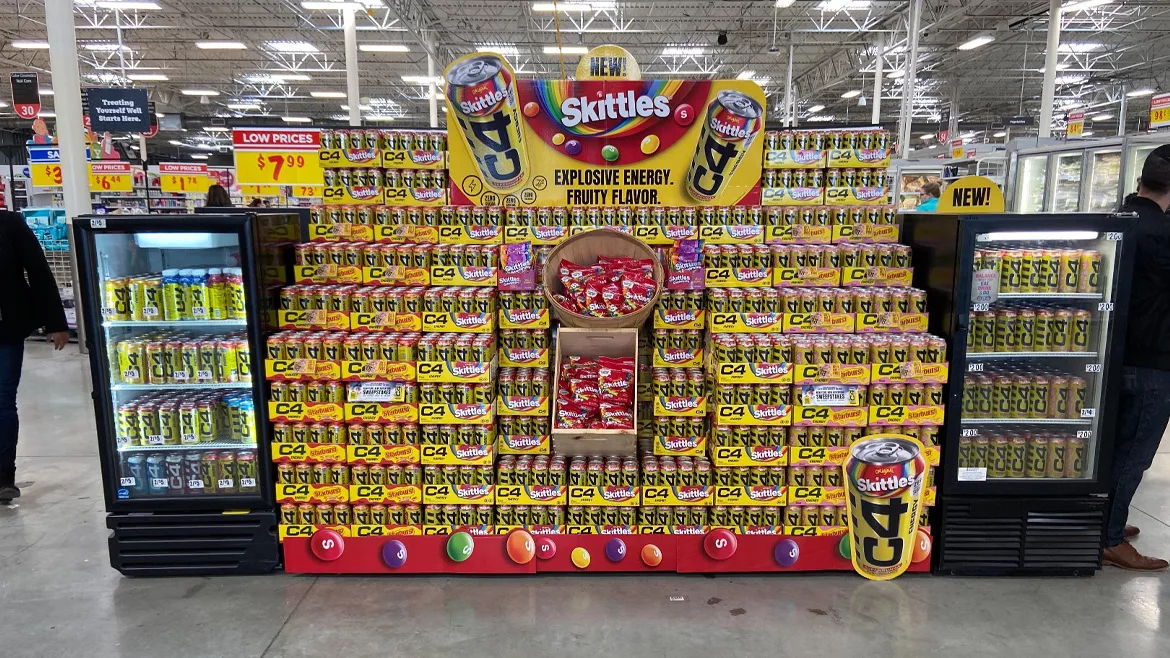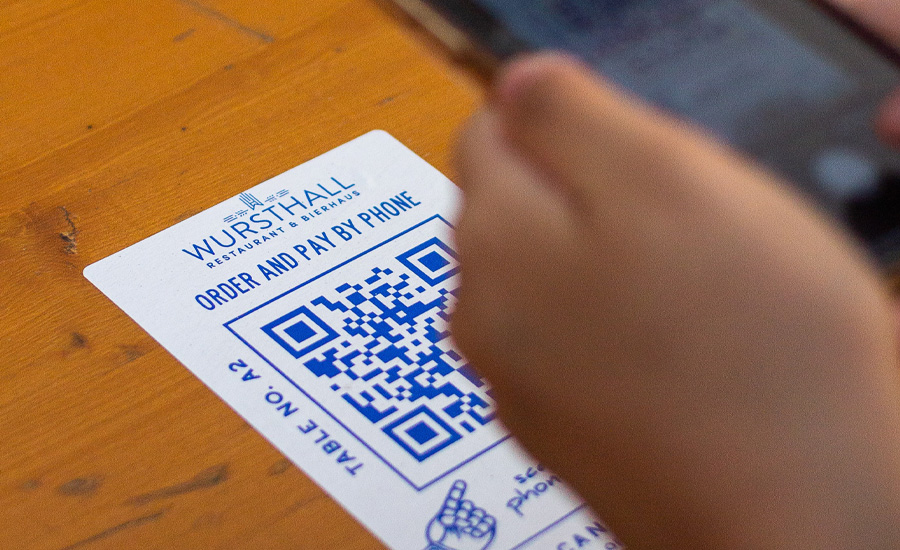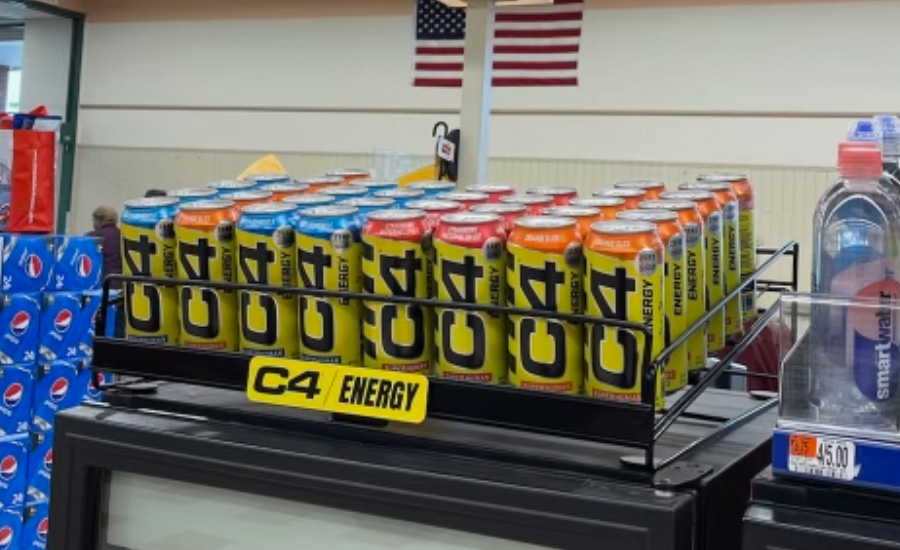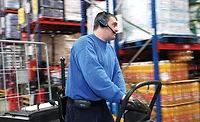Channel Strategies
Technology helps beverage brands implement digital merchandising solutions
QR codes help expand direct-to-consumer opportunities

Image courtesy of Nutrabolt
As consumers increasingly turn to digital technology for their shopping needs, the modes of traditional merchandising for consumer packaged goods (CPGs) is not as clean cut as it once was. Instead, brand owners are finding ways to amalgamate the benefits of traditional merchandising with the growing influence of digital.
Anna Garcia, director of trade and shopper marketing for Austin, Texas-based Nutrabolt, and Hagen Panton, vice president of sales capability for C4, a brand of Nutrabolt, highlight the impact of mobile phones on today’s shopping patterns.
“The biggest trend that has been around for some time, and continues to grow, is mobile phone usage at the shelf and leveraging that insight to create merchandising programs that deliver educational or value-added experiences for consumers through tactics such as gamification, social integrations/challenges, and delivering coupons/rebates instantaneously,” the two explain. “In addition, since COVID, consumers are pantry loading, making displays for large format stores, and multipack offerings, more relevant to capitalize on this shift in buying behavior.”
Garcia and Panton note that demos and interaction from sampling events is the most effective way to engage with consumers; however, the pandemic disrupted those opportunities. As such, digital solutions helped brands still engage with consumers.

Photo by Albert Hu/courtesy of Unsplash
“With the advance of native mobile phone technologies, we have noticed an uptick in the usage of QR codes and augmented reality engagements at-shelf, as well as point-of-sale that encourages brick-and-mortar shoppers to extend their brand engagement long-term by incentivizing them to connect to the brand on social media,” they say. “In general, brands are investing more in ‘retail-tainment’ display activations to deliver a more immersive and memorable experience for the consumer, and to win incremental space at retail.”
Eye-catching designs
Although digital has offered new ways for brands to connect with consumers, experts note that in-store merchandising plans still will offer consumers direct exposure. However, given the increasing competition from new and established brands, display sets are developing new ways to entice and engage with consumers.
“With competition increasing every day, we are always looking for ways to overcome challenges related to space availability in-store,” Garcia and Panton say. “We have employed the use of custom designed cooler racks that capitalize on the available airspace that exists between shelves, to convert it to saleable real estate.
“We have also broken from the norm with ambient display innovation,” they continue. “While we all know ‘cold is sold,’ there is something to be said for driving impulse buys at the counter with simple corrugated countertop displays that drive awareness and trial for our new flavor launches, all while communicating key brand benefits as a means of differentiating from the competition.”
Garcia and Panton also point to cooler toppers as a way in which the company has been able to merchandise ambient packages of C4.
“We created a HydraCap that holds warm and cold facings in one unit,” they explain. “This additional warm space gives us the opportunity to merchandise our legacy C4 power, alongside our C4 beverage. The unit also holds six-pack carriers, so the consumer can build their own six-pack.”
Through the “build your own six-pack” design, the company is able to sell more product with each transaction while offering consumers a more convenient way to carry C4 home, the two explain.
Yet, Garcia and Panton also are quick to highlight that coolers remain the most valuable entity that brands can leverage with their merchandising plans.
“We show noticeable lifts in cases sold and a positive ROI in stores where we have placed dedicated coolers, which we are able to track using Repsly,” they explain. “Secondarily, smaller footprint and modular displays that hold several cases of product are always a good investment as they have the versatility to be accepted in multiple retail channels.”

Images courtesy of Nutrabolt
For a company like Nutrabolt, colorful displays also can be a powerful, attractive tool. Most recently, C4 released its collaboration beverage with Skittles and was able to utilize the bright color schemes in its merchandising to leverage the release.
“[W]ith the roll out of our extremely eye-catching C4 x Skittles displays, we have experienced over 270% lift in off-shelf placements versus prior year as tracked internally through Repsly and corroborated externally by IRI via ‘Time on Display’ metrics [up] 200% versus [the] prior year,” Garcia and Panton explain.
Merchandising at home
Although merchandising is mostly associated with traditional retailers, innovators are prompting beverage-makers with onsite locations, like wineries, to utilize merchandising to further opportunities with direct-to-consumer (DTC) solutions.
For example, VinesOS recently unveiled a fully integrated, stripe-based point-of-sale (POS) along with a new brand design at WiVi in Paso Robles, Calif.
VinesOS’ cloud-based point-of-sale enables wineries to manage all DTC channels from a single dashboard: POS, clubs, subscriptions, eCommerce and reservations, it says.
Jules Robbins, CEO of VinesOS, explains how digital merchandising solutions can further brand loyalty with consumers.
“At VinesOS, we feel it’s all about creating a smooth customer experience and building loyalty,” she says. “During a point-of-sale purchase, staff should be trained to promote loyalty options, such as club and subscription offerings, to keep the customer coming back. They should be able to add a new customer quickly and easily or invite the customer to scan a QR code to sign up for their club using their mobile phone, with ApplePay or GooglePay, and do it in less than a minute.
“Staff should know as soon as they add a customer to the order what their favorite products are, their lifetime value, when they were in last, and see any important notes from the manager,” Robbins continues. “Loyalty benefits, such as free tastings or percent discounts, should be auto-applied, and the staff should be able to tell the customer how much they saved on that order.”
Through digital merchandising aspects like QR codes, brands can communicate a wealth of information to consumers, including product details, menu items of what’s being poured, ordering capabilities, checkout stations as well as a chance to join loyalty or club programs, Robbins notes.
Given the adoption of subscription models on popular eCommerce websites, beverage alcohol brands can take a similar approach where consumers select the alcohol they want through DTC, she explains
“The subscription program has been a huge success for our clients, with membership skyrocketing up to 800% for some of our clients. In the same way that you order kibble for your dog or diapers for your baby to be delivered on a regular basis, customers are showing a huge desire to have their alcoholic beverage of choice delivered this way as well,” Robbins says. “And for the business, it’s a huge win, building customer loyalty and building pre-sold revenue.”
Jessica Schueneman, hospitality director with Moersch Hospitality Group, Baroda, Mich., notes that its membership program was designed to reward its consumers with exclusive pricing, customization as well as additional savings through subscription auto-ship orders.
“With the success and familiarity of other subscription-based goods and services, like Amazon, we thought, why couldn’t this work for our wines? Vineyard Premier is our move from the traditional wine club to a more customer-friendly and flexible way to serve our members,” Schueneman says. “Basically, customers get the wines they want, when they want them, delivered to their door while saving money.
“Has it been a success? We believe so — membership grew 800% in our first year rolling out Vineyard Premier,” she continues. “VinesOS has been an integral partner with us as we developed Vineyard Premier — they have been and continue to be so great to work with.”
As beverage brands must now merchandise for physical and virtual spaces, innovators will look to bridge these retail outlets.
Looking for a reprint of this article?
From high-res PDFs to custom plaques, order your copy today!






